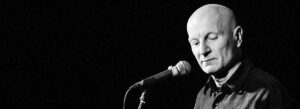“It is to be remembered that all art is magical in origin – music, sculpture, writing, painting – and by magical I mean intended to produce very definite results. Paintings were originally formulae to make what is painted happen. Art is not an end in itself, any more than Einstein’s matter-into-energy formulae is an end in itself. Like all formulae, art was originally functional, intended to make things happen, the way an atom bomb happens from Einstein’s formulae.” (William S. Burroughs)
Art is, in many ways, the twin brother of magic. As alluded to by Burroughs, all art is magical in origin and the cave paintings of our ancestors were intended to make things happen, to produce results. So, for example, a cave painting of hunting ensured a successful hunt. Magical artifacts, objects, weapons, signs, markings, symbols, emblems, sigils, runes, galdrastafir, talismans as well as cats’ cradles, troll knots, straw plaits, charms, reliquaries, bundles, spirit boxes, fetishes, sacred images, and diviner’s boards — all these are functional in nature and represent a direct link to the magical Weltanschauung. However, art is not only functional, it is a communication and interaction with the Divine, and an expression of an outer dialogue with an “inner voice” that the ancients often called genius or divine inspiration. In this way art cannot be reduced to magical functionalism. All true art is inspired. Inspiration, often accompanied by an ecstatic expansion of Consciousness, is called Wode in Germanic magic and the key feature of Woden. Art is a profound expression of the gift of Consciousness, which humanity got bestowed with by Odin. Like in the Tantric tradition of in Kashmir Shaivism, Odin is the embodiment of Consciousness. Woðanaz represents the God of Consciousness among the Aesir; he is the Master of Inspiration. And thus Odin is the god of artists and magicians. In this way art is the highway of engaging with magic, mystery and myth. In One Is All.




